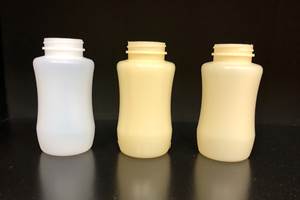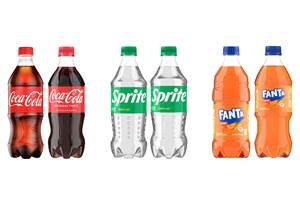Novel Additives Lift the Fog
Kafrit has new developments in anti-fog technology for PETG, nylon, PLA for agricultural and packaging film and sheet.
Significant changes in the chemistry of additives for plastics typically take years to develop and when unveiled are often likely to be game changers. That may well be the case with the latest developments on anti-fog products for PETG, nylon and biodegradable polymers such as PLA agricultural and packaging film and sheet from Kafrit Industries Ltd.
Last November, the Israeli company (Kafrit Group), a global supplier of plastic additive masterbatches and compounds, further expanded into North America through the acquisition of Polyfil Corp., Rockaway, N.J., one of the largest independent producers of functional additive masterbatches for polyolefins for 35 years, with a specialty in film extrusion. Kafrit is a custom additive masterbatch producer, with operations in Canada, Europe and China. Special target markets have included PC sheet and film and agricultural film and flame-retardant PC injection molding
Renee Lapierre, technology manager at Kafrit’s Polyfil wholly-owned subsidiary, recently contacted us on one of Kafrit’s latest focus areas—anti-fog coatings and masterbatches. The company is inviting customers in the industry to collaborate on using these advanced AF additive products which include:
â–ª An AF compound coating for PETG film, which is said to be a breakthrough that sets the company as a global leader where solutions for polyesters are concerned. It is designed for use entirely on the outer layer that faces the packaged material. A layer of only 7 mm in a multilayered structure was shown to be sufficient for giving immediate excellent results, without any waiting time. The product was tested in both cold anti-fog and hot anti-fog tests and showed remarkable performance.
â–ª Another two solutions are and anti-fog for nylon and one for biodegradable polymers (e.g., PLA) AF masterbatches. The anti-fogging property is very popular in sheets and films used either for agricultural purposes or for food packaging. In both cases the manner by which the property is realized is identical, but the goals of its implementation are different.
In agriculture it has functional purposes: it allows maximum penetration of light into the greenhouse by keeping the sheet transparent, it prevents water from dripping from the greenhouse roof on the plants, thereby preventing the crops from heating and burning when sunlight passes through the water droplets, that function as optical lenses.
In food, on the other hand, the property serves mostly for an aesthetic purpose, allowing customers a better view of the product by keeping the film transparent. In some cases the property prevents water from condensing on the packed food, which damages its quality.
According to Kafrit, the incorporation of the AF additive into the film can be done by one of these two methods. In the first method, the property is added to the film during the extrusion stage using a masterbatch or a compound.
In the second, the film is coated by the anti-fog additive, and while this method makes the product more expensive since it requires an additional process to be added, sometimes it cannot be avoided since not every polymer has an AF additive that is suitable for extrusion.
Kafrit has identified this need, and after a complex development process it is offering three new anti-fog solutions for the market, which open new possibilities to sheet and films manufacturers while retaining manufacturing in a single process, in which the AF is applied by extrusion without the need to perform AF coating in a separate process.
According to the company, while anti-fog additive solutions for nylon exist on the market, their performance most often fails to meet the standards required, which are achievable in polyolefin applications. Kafrit’s new AF masterbatch reportedly gives an excellent result, and it is intended to be used in layers of nylon 6 or nylon 6/66 copolymer. The product, developed in collaboration with a leading European nylon manufacturer, is approved for food contact and is used for packaging fruit and vegetables, as well as for multi-layer food packaging. By adding 6% of the Kafrit masterbatch to a 30 mm thick film, an excellent result is obtained after 6 hours. By increasing the percentage to 12%, the reaction time becomes shorter and an excellent result is obtained after two hours.
Related Content
How to Extrusion Blow Mold PHA/PLA Blends
You need to pay attention to the inherent characteristics of biopolymers PHA/PLA materials when setting process parameters to realize better and more consistent outcomes.
Read MoreCoca-Cola’s Redesign of Small PET Bottles Pushes Lightweighting Below Prior ‘Floor’
Coca-Cola thought it had reached the limits of lightweighting for its small PET carbonated soft drink bottles. But a “complete redesign” led to a further 12% reduction.
Read MoreMultilayer Solutions to Challenges in Blow Molding with PCR
For extrusion blow molders, challenges of price and availability of postconsumer recycled resins can be addressed with a variety of multilayer technologies, which also offer solutions to issues with color, processability, mechanical properties and chemical migration in PCR materials.
Read MoreFor Extrusion and Injection-Blow Molders, Numerous Upgrades in Machines and Services
Uniloy is revising its machinery lines across the board and strengthening after-sales services in tooling maintenance, spare parts and tech service.
Read MoreRead Next
Lead the Conversation, Change the Conversation
Coverage of single-use plastics can be both misleading and demoralizing. Here are 10 tips for changing the perception of the plastics industry at your company and in your community.
Read MorePeople 4.0 – How to Get Buy-In from Your Staff for Industry 4.0 Systems
Implementing a production monitoring system as the foundation of a ‘smart factory’ is about integrating people with new technology as much as it is about integrating machines and computers. Here are tips from a company that has gone through the process.
Read More










